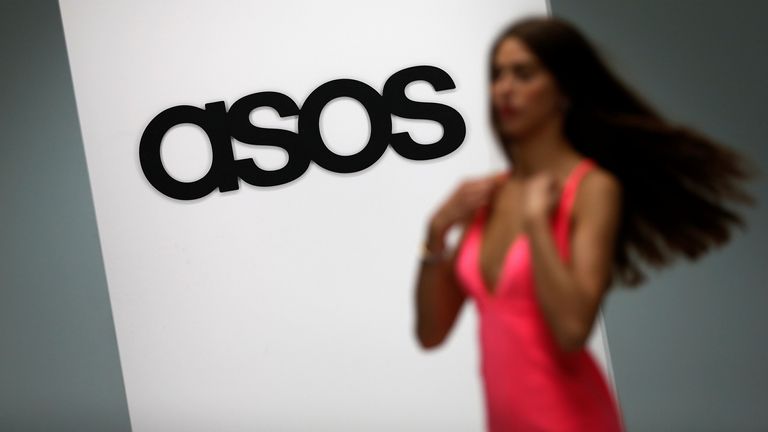Online fashion retailer ASOS has warned profits could fall by as much as 40% as it counts the cost of supply chain strains and Brexit duties – and said it was parting company with its boss.
Shares plunged as much as 15% in early trading as the group pencilled in slowing sales growth ahead, after benefiting from a surge in demand during lockdowns.
It is the latest fashion retailer to warn of supply chain strains and higher shipping costs taking their toll on trading, following Next and Boohoo.
Image: The group is parting company with chief executive Nick BeightonMeanwhile, it is targeting more rapid global expansion abroad over the coming years, with the aim of lifting annual revenues to £7bn.
ASOS also revealed that Nick Beighton is stepping down as chief executive after six years in charge.
AdvertisementAnnouncing Mr Beighton’s departure, chairman Adam Crozier said that while significant progress had been made in recent years, there was “more to do to accelerate the pace and intensity of commercial execution”.
The announcement came as ASOS reported a 25% rise in pre-tax profits to £177.1m for the year to the end of August as sales climbed 20% to £3.9bn.
More on Supply Crisis Related Topics: supply crisisBut profit margins were squeezed by factors including “elevated freight and Brexit-related duty costs” as well as the mix of products sold.
Meanwhile a poor summer season dragged on growth in the UK.
Calls for more British butchersThat was after travel restrictions negated demand for holiday outfits for its twenty-something customers, many of whom were only eligible for second dose of the coronavirus vaccine in August and September.
ASOS predicted a slower pace of growth, of 10-15%, for the 2021-2022 financial year and also sees profits falling.
It blamed tough comparisons with a period when it has benefited from physical stores being closed as well as the continuation of “industry-wide supply chain pressures”.
These, it said, would result in longer lead times for the products it orders to become available as well as “constrained supply” from some partner brands.
Sales are expected to pick up again in 2022 as “event-led” demand picks up while those supply constraints ease and the company splashes out on marketing to boost international growth.
Profits are predicted to be hit by the loss of a £67.3m “COVID-19 related benefit” – linked to the fact that consumers have been less likely to return outfits during lockdowns.
Higher freight costs, Brexit duties, delivery charges and increased labour costs also look set to take their toll on the bottom line, ASOS said.
For the longer term, ASOS unveiled a new strategy, targeting annual revenues of £7bn within four years by stepping up international growth – doubling the size of its combined US and Europe business – and adding at least £1bn to own-brand sales.
Image: Higher freight costs are taking their tollCurrently, UK sales represent more than 40% of the total.
Finance director Mat Dunn, who is leading the business day-to-day following Mr Beighton’s resignation, said the group had delivered “another strong performance”.
He added: “Looking ahead, while our performance in the next 12 months is likely to be constrained by demand volatility and global supply chain and cost pressures, we are confident in our ability to capture the sizeable opportunities ahead.”
Meanwhile, ASOS said the Topshop, Topman, Miss Selfridge and HIIT brands that it picked up following the collapse of Sir Philip Green’s collapsed Arcadia empire were performing well.
The brands, which are now online only, are estimated to have contributed £61.7m in sales since the acquisition in February.
